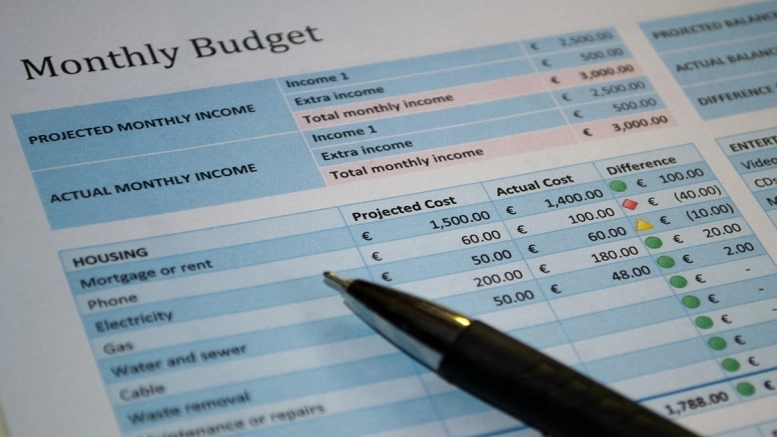Save more with a monthly budget
01/02/2020
Although it may seem like a simple thing to do, setting yourself a monthly budget is one of the best ways to save money each month. If you have a budget to follow, and you know what your in-comings and outgoings are, you’re less likely to overspend and end up not being able to save anything – or, in the worst scenario, end up stuck in your overdraft or in debt each month.
The issue with a lot of budgets is they don’t work, and they are too difficult to stick to. Whilst your budget will look at your typical monthly spending, it won’t automatically add in all the “one-offs” throughout the month (because you won’t always know what they are going to be when creating your budget) – and it’s often the one-offs that can cause the most problems. However, a budget done correctly is a great way to analyse your monthly finances and it can help answer two important questions: “do you spend more than you earn?”, and “what can you afford to spend?”.
Creating your own, personal monthly budget is essential to developing the right spending habits, setting aside money for the future, and ensuring the money in your bank account goes where it needs to. But how do you make a budget? Where do you even begin?
Take a look at these 10 tips for how to start your monthly budget and start saving more each month…
1 – Decide why you want a budget – this is the first thing you need to do; ask yourself why you want a budget in the first place as this will help you create the right budget for you.
2 – Look at your current spending habits – and be totally honest with yourself! Write a list of the things you spend the majority of your money on at the money as this may help you cut out unnecessary things when creating your budget.
3 – Use a calendar to catch “one-offs” – check things like birthdays, celebrations and holidays so that you can add those into the correct month for your budget.
4 – Add up all of incomings – this will include your income, and anything else that goes IN to your bank account each month (as you’ll then be able to see if you’re spending more than you’re earning).
5 – Think about your financial goals – these will be your own, personal goals, not just ‘typical’ financial goals that you think people ‘should’ have. Whether your goal is to save enough to buy a house, or save enough to buy a new mattress, a goal is a goal and you need to realise what yours are!
6 – Decide how much to save – make sure you don’t make this number too high for each month, make it realistic.
7 – Choose a tool to make your budget – there are great tools online to help you create your monthly budget so make sure you take advantage of this.
8 – Input your numbers – it’s time! After the first seven steps, you’re now ready to put all of your numbers in to the budgeting tool you’ve chosen.
9 – Avoid common budgeting mistakes – such as missing out expenses you need to pay each month or setting your saving price too high.
10 – Set up a monthly budget review – make sure you check your budget each month and ask yourself if you’re sticking to it, is it too hard to follow, are you saving the amount you wanted to save or are you still overspending? Without asking yourself these questions each month, you won’t be able to edit your budget and improve it.
Also, here’s an extra tip for you – always remember that Qmee is a great way to earn some extra money! Whether you’re interested in taking surveys, or earning cash when shopping online, the rewards that go in to your piggybank will also go in to your PayPal account and end up as an extra incoming when writing your monthly budget.
